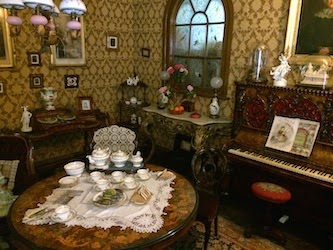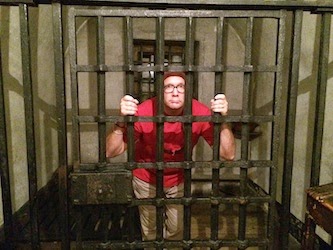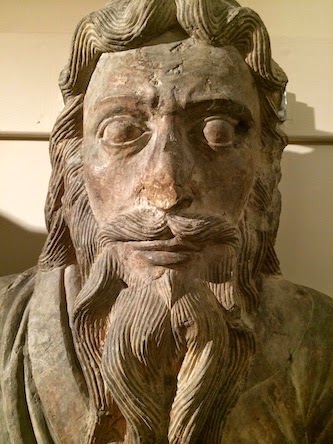We visited two of York’s principle museums while we were there: the Yorkshire Museum and the Castle Museum. We’ve described both museums–particularly the Yorkshire–as a hodge-podge of a collection, but we don’t necessarily mean that as a bad thing.
The Yorkshire Museum was originally filled with artifacts belonging to the Yorkshire Philosophical Society, a non-profit organization (they are actually still around and thriving) whose mission it is to promote the understanding of science. They founded this museum in York in 1830, and it was one of the first such museums in Great Britain.
The museum is housed in a building built on the ruins of the basement of Saint Mary’s Abbey, an abbey that predates the English Reformation. The bottom floor of the museum is where you can see the remnants of the abbey itself, and this is where the museum displays its most interesting archaeological artifacts, including the York Helmet, an Anglo-Saxon armor helmet from the ninth century. You can also see the abbey’s original fireplace and some remarkable statuary from the abbey like the one shown at the top of this blog.
 |
| The York Helmet |
Much of the rest of the Yorkshire museum is devoted to natural sciences exhibits, with taxidermy animal displays, replicas of dinosaur bones, and other things designed to educate and excite children. There are, however, a few other interesting items of note, such as some 2000 year old coins, a bun of remarkably well-preserved auburn-colored hair of a Roman girl from the first century, and viking artifacts from swords to jewelry.
Across town is the York Castle Museum. Where our favorite highlights of the Yorkshire Museum are the archaeological collections, our favorites from the Castle Museum are the historical recreations. Much of the Castle Museum is dedicated to recreated spaces of Victorian and Edwardian living spaces, from parlors and living rooms to kitchens and entire city streets.
 |
| A Victorian Parlour |
 |
| A Life-Size, Walk-Through Victorian Street Scene |
The Castle Museum also has a special exhibit marking the centenary of the start of World War I. It’s likely the best museum-centric explanation for the political climate in Europe that led to the War to End All Wars that we’ve seen. There is also an interesting toy collection (though we were a bit miffed that some of the toys we played with in the 60’s and 70’s were on display as “historical”), and the jail exhibit (one of the museum’s two buildings is in York’s old women’s prison building) is a can’t-miss.
 |
| A York Jail Prisoner |







